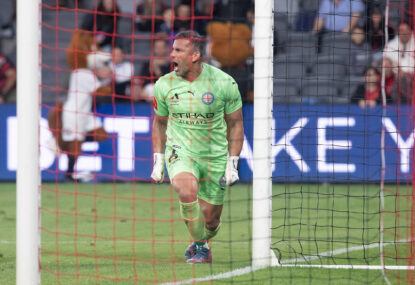Recently, University of Southern Queensland Football Club (USQFC) defeated Willowburn Football Club 5-4 in a penalty shootout to win the Football Toowoomba Men’s Premier Division grand final.
It’s been a long time between drinks for the top Uni side, having last won the title in 1986. I was part of the USQ club all that time ago, and the win prompted me to think back.
Nationally, the game is almost unrecognisable today compared with 1986, but has that been reflected at this lowest of grassroots level?
Cosmetic changes
Back in ’86 USQFC was called the Darling Downs Institute of Advanced Education Amateur Soccer Club (DDIAEASC).
The local competition has also changed names from the Toowoomba and District Soccer Federation, to Football Toowoomba.
Soccer, it seems, is a thing of the past.
The ’86 final was drawn at full time, so went to a mid-week replay. That result prompted a change locally to extra-time and penalties, with a brief flirtation with golden goal thrown in.
The competition has grown
For a long time, the local senior competition had around 25-30 teams per season split into three or four divisions, including at least one ladies division.
Today, the region boasts 49 senior teams spread across four men’s, two ladies’, under 18 colts and U18 fillies divisions.
In 1986, there were two regional and five Toowoomba city clubs. Today seven of 14 clubs, and 20 teams, come from outside the city proper.
There is also a summer futsal competition administered by Football Toowoomba.
What else has changed?
The biggest change is of course money. Fees have increased substantially, which, along with the increase in player numbers, has boosted the gross turnover of the local body.
Most of this extra money has gone towards the increased administration costs, various coaching programs, player insurances and fees for the higher level governing bodies.
Little of it is seen by players on the park.
In 1986, winning came with a modest cash prize for the club. This is no longer the case.
Playing standards do not seem to have improved, and I believe have declined.
While country clubs that literally played on cow paddocks or sloping grounds seem to have disappeared, the facilities at most clubs, with a couple of exceptions, are not noticeably better than they were.
The cost then of playing football has simply increased with little increased benefit to players.
Has the sport improved in 30 years?
On the strength of numbers alone, I would say yes.
New football clubs have been created in places where, in the past, rugby league would have been the only sport considered.
I would link this directly to the national growth of the sport, and the A-League.
The decline of the NSL was mirrored locally in declining player and team numbers, but equally the new national enthusiasm for the sport has seen a corresponding expansion.
Overall then, I see the sport at this level as being healthy, but can’t help but feel an opportunity is still being missed.
At the moment, money flows up the chain to the state and national bodies, but grassroots football needs to devote more effort to longer term strategic improvements rather, than the day-to-day matters that currently are its primary focus.
It can’t do that without more support from the governing bodies.
Still, as a genuine fan of football, I am excited and optimistic that the sport at its lowest level is healthy and seems to be on an upward trajectory.
But then again, maybe I’m still wearing rose coloured glasses after Uni’s win. Go you good things!



































































































